Buried deep in the dark recesses of my gear closet reside a trio of tents I seldom use. Their stuff sacks are tattered and torn, the tents within equally haggard. Oddly enough they haven’t been on many outings. Whereas my backpacking and mountaineering tents look brand spanking new even after a decade of adventures, just one or two motorcycle trips is enough to beat the tar out of a good tent. As such, I often embark on extended two-wheeled trips with a junker shelter I know I’m going to abuse and likely repair on my return.
In the last few seasons I’ve made it my mission to find and evaluate the best backcountry abodes for demanding travels. It’s a category with a dearth of choices. The few options I found have proven worthy of the spend, but they command eye-watering sums well in excess of a thousand bucks. When Big Agnes released their ruggedized Foidel Canyon 2, I knew it filled a very necessary gap.
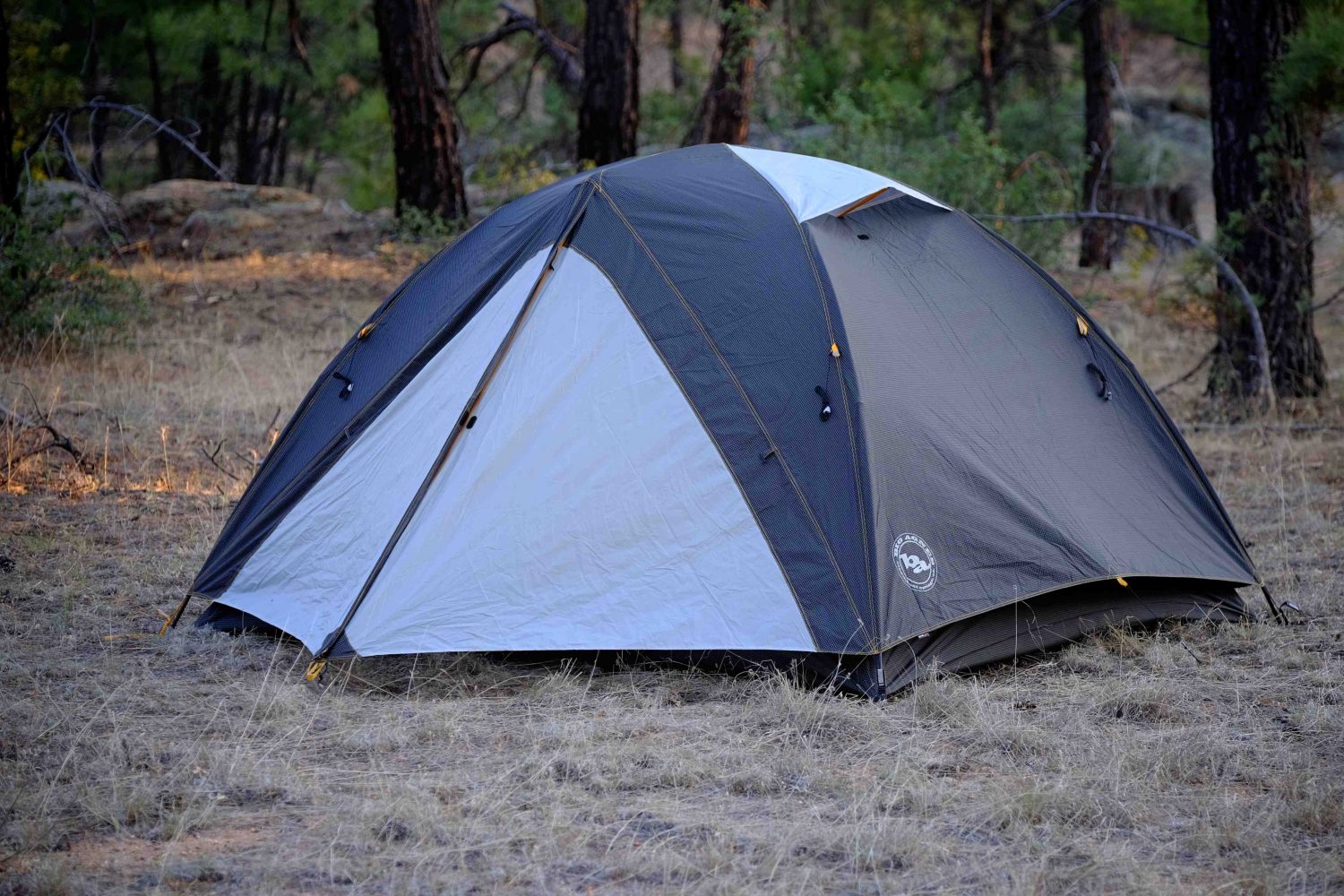
Like many tents designed for harsh conditions, the Foidel Canyon has a bent toward mountaineering, but it includes enough ventilation for warm weather outings. Accurately billed as a three+ season tent, it’s ideally suited for motorcycle travel.
What makes the Foidel unique is the use of Dynema in the floor and rainfly. It is one of many wonder-fibers typically reserved for climbing gear where weight and tensile strength are critical. In most applications the downside is cost, but despite the seemingly high MSRP of $650, the Foidel Canyon 2 is a relative bargain. Because Dyneema is so expensive, the fly and floor fabrics are made primarily of standard nylon with the Dyneema visible in the form of a tight rip-stop grid pattern. 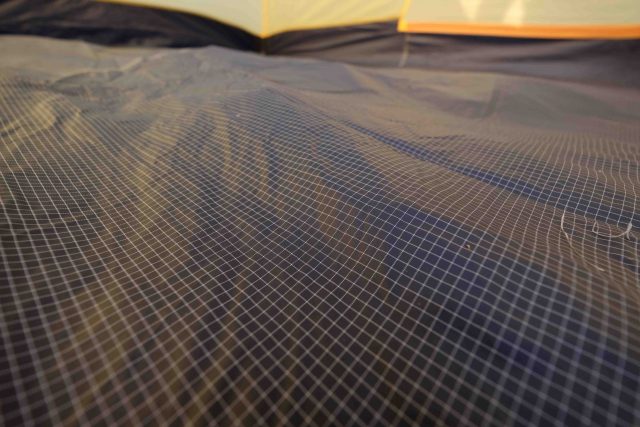 Not to say it can’t be torn, but it would take considerable effort to do so. Adding to the fabric’s durability is a 100-denier thickness, which is considerably beefier than most tent fabrics.
Not to say it can’t be torn, but it would take considerable effort to do so. Adding to the fabric’s durability is a 100-denier thickness, which is considerably beefier than most tent fabrics.
With a simple architecture using two primary cross poles and a short spreader pole to amplify headroom, the 30 square feet of floor space is sufficient for two people, but palatial for one. For those needing more elbow room, the Foidel Canyon is also available as a three-person shelter. At just under 5.5 pounds, the two-person tent is surprisingly light given the use of heavy-duty fabrics. The packed size is obviously a touch larger than most tents, but still small for most applications. I would backpack with the Foidel in a heartbeat.
The two vestibules allow for a copious amount of gear storage and protect the dual inner doors in foul weather. Each door includes a large retractable panel exposing a large window of tight mesh to help with airflow during warmer conditions. Secondary mesh panels at the peak of the tent body help reduce condensation.

Like many contemporary tents, the tent body is held to the DAC aluminum poles with a series of clips. This speeds up the pitch time, and also allows for optimal air pass-through between the tent body and rainfly. If I have one minor quibble with the overall design of the Foidel Canyon 2, it isn’t with the materials or features of the rainfly, but the color. Because it is ideally aimed at the mountain traveler, Big Agnes chose to make the fly out of the same fabric as the floor. I love the durability of the Dyneema fibers, but I’m not too wild about the black color. Even in slightly warm conditions, the black rainfly generates serious internal heat. A bonus in cold months, it has obvious challenges when the sun is punishing.
On the upshot, on days when the sun is beaming, the fly can be quickly pealed off to expose the lighter colored tent body and the large mesh panels built into it. I also noticed moisture was quick to cook off the black fabric making early morning pack-up fast. On my last two test outings while camped in the tall grass of the Ogallala Grasslands, I left the rainfly off altogether and enjoyed viewing the stars through the upper mesh windows. Inside the shelter, all of my essentials were neatly organized in the six inner mesh pockets, two of which are dedicated as media pockets. Yes, I too watch movies in my tent now and then.
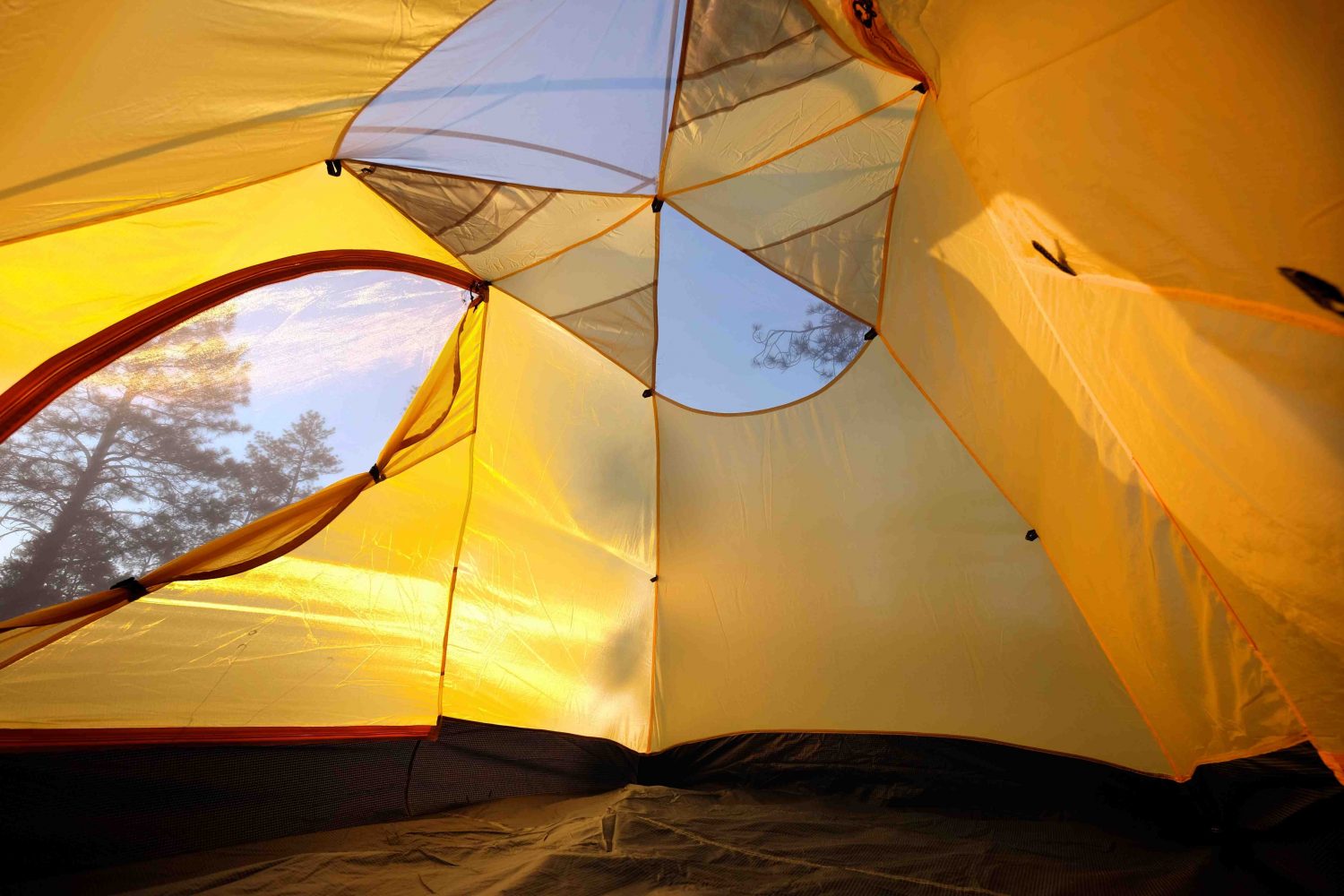
One of my favorite attributes of the floor plan is the asymmetrical shape with a slight taper at the foot section. For two familiar sleepers positioned shoulder to shoulder, it adds extra wiggle room. The 92-inch length offers plenty of real estate for taller sleepers with ample space for gear to be stowed at either end.
Within days of boxing the Foidel Canyon 2 I had it packed in a motorcycle pannier destined for a 2,000 mile trip through the Great Plains. I encountered thunderstorms, high winds, searing summertime temperatures, and as I knew I would—hundreds of miles of corrugated gravel roads. The vibrations from those bumpy tracks are precisely what destroys most tents in transit. The Dyneema fibers woven into the 100-denier nylon didn’t show any signs of distress after 10 days on the road.
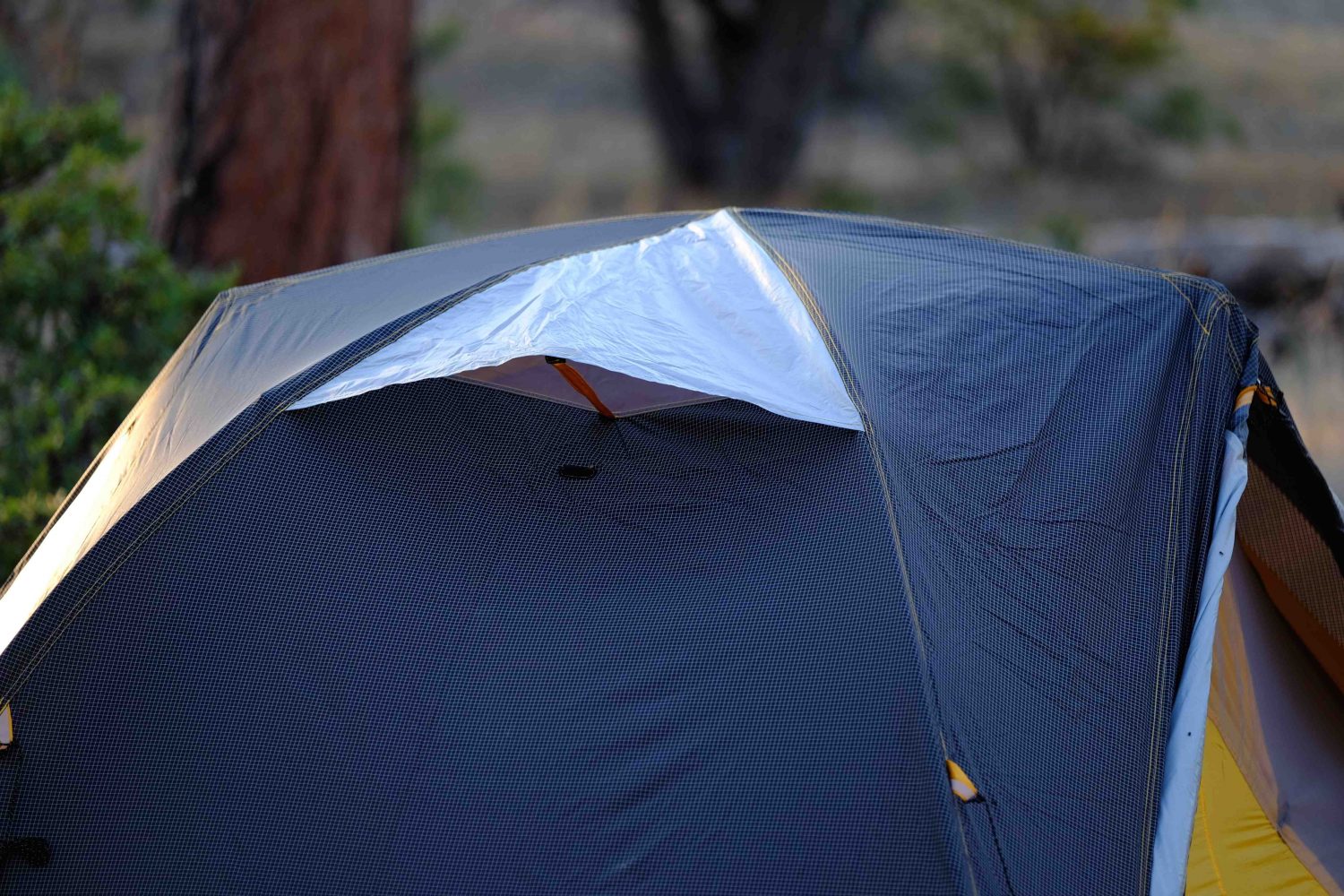
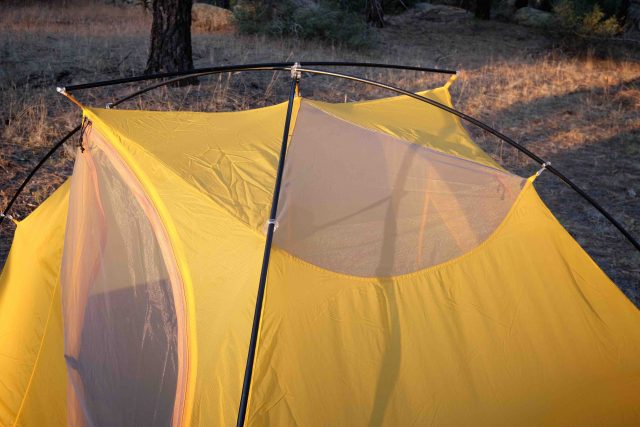

Tent designers have a myriad of considerations to address with tent innovations, but durability seems to always take a back seat. For that reason I think the Foidel Canyon 2 will appeal to many users, particularly those on protracted travels spanning months if not years. Although it’s a touch heavier than similarly sized shelters, I know every time I pluck it from a pannier or bag it will be in one piece, ready to offer safe haven. What more could anyone ask for?
www.bigagnes.com


